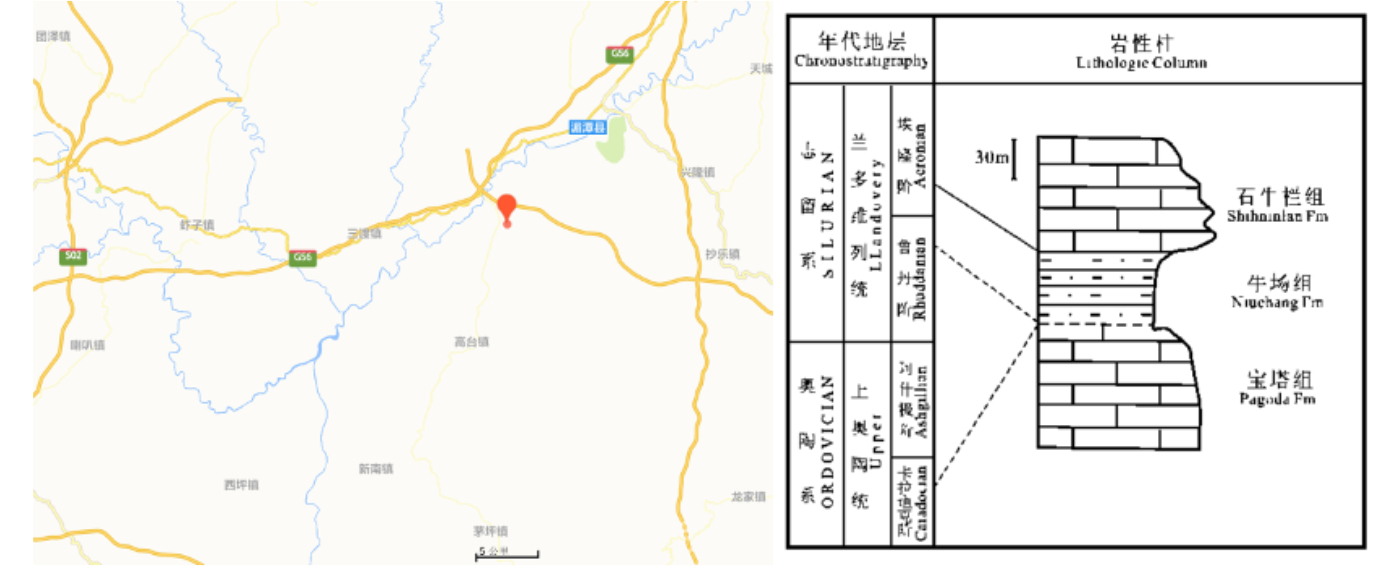Niuchang Fm
Type Locality and Naming
The Niuchang Formation was introduced and described in detail by Rong Jiayu et al. (2003,2004). The type locality is Niuchang, 6 km south of Huangjiaba, west of Meitan County Town, northern Guizhou. The type section is Gaotan section, 2 km northwest of Niuchang, 6 km south of Huangjiaba, west of Meitan County Town, northern Guizhou. Coordinate: 27°42′46″N, 107°24′04″E.
Synonym: (牛场组); The Niuchang Fm has been usually called Lungmachi Fm (Longmaxi Fm). However, the Lungmachi Fm is marked by black, siliceous shale with abundant graptolites, whereas the Niuchang Fm is lithologically and yields rare graptolites, although it can be correlated with parts of the latter (Rhuddanian—lower Aeronian).
[Figure: The locality and lithology of the Niuchang Formation at the type section (after Rong et al., 2004)]
Lithology and Thickness
The Niuchang Formation is characterized by near-shore, shallow water, clastic sediments rich in shelly fossils (chiefly brachiopods and common trilobites).
Relationships and Distribution
Lower contact
The Niuchang Fm is underlain by the Upper Ordovician Pagoda Fm (called the Baota Fm in Ordovician lexicon entries) with a parallel unconformity, or underlain by an intermediate Wulipo Bed Fm that spans the Ordovician-Silurian boundary.
Upper contact
It is overlain by the Shihniulan Fm (=Shiniulan Fm)
Regional extent
The Niuchang Formation is distributed from Zunyi to Sinan, via Meitan at northern Guizhou Province along the near shore in term of the paleogeography.
GeoJSON
Fossils
The most abundant fossils in the Niuchang Formation at the type locality are brachiopods. There occur Athyrisinoides (=Kitorhynchia) fengkangensis (Wang), Levenea qianbeiensis (Rong et al.), Merciella striata (Rong et al.), Strophomena modesta Rong et al., Eostropheodonta sp., Fardenia sp., Zygospiraella duboisi (Verneuil), Eospirifer sp., and a few others, associated with trilobites (Encrinuroides sp. and Dicranopeltis sp.). The shelly association may be assigned to the inner Benthic Assemblage 3 position (Rong et al., 2004).
Age
Depositional setting
The fossils and the sedimentary characteristics shows that the deposition setting of the Niuchang Formation is near-shore, shallow water clastics.
Additional Information
